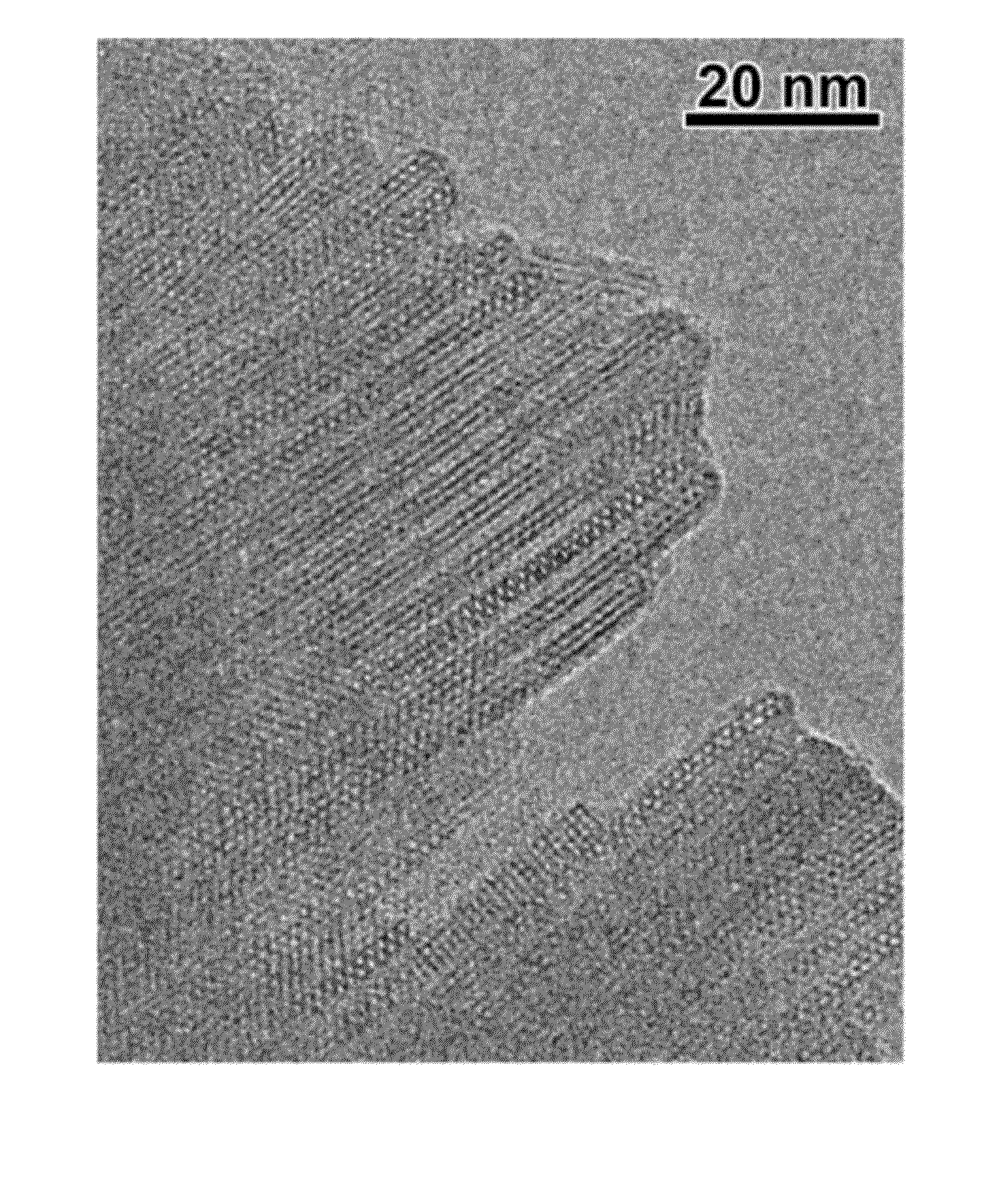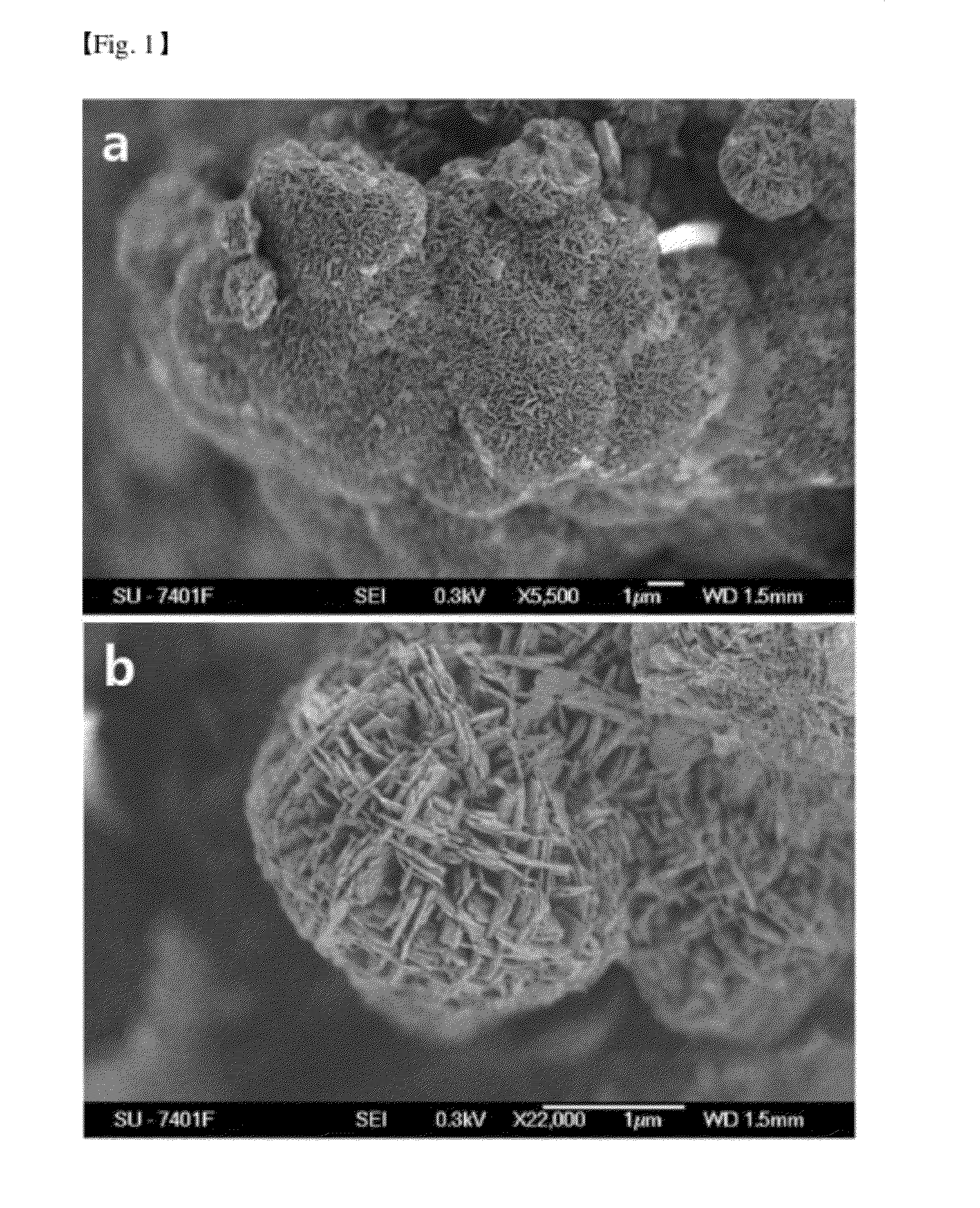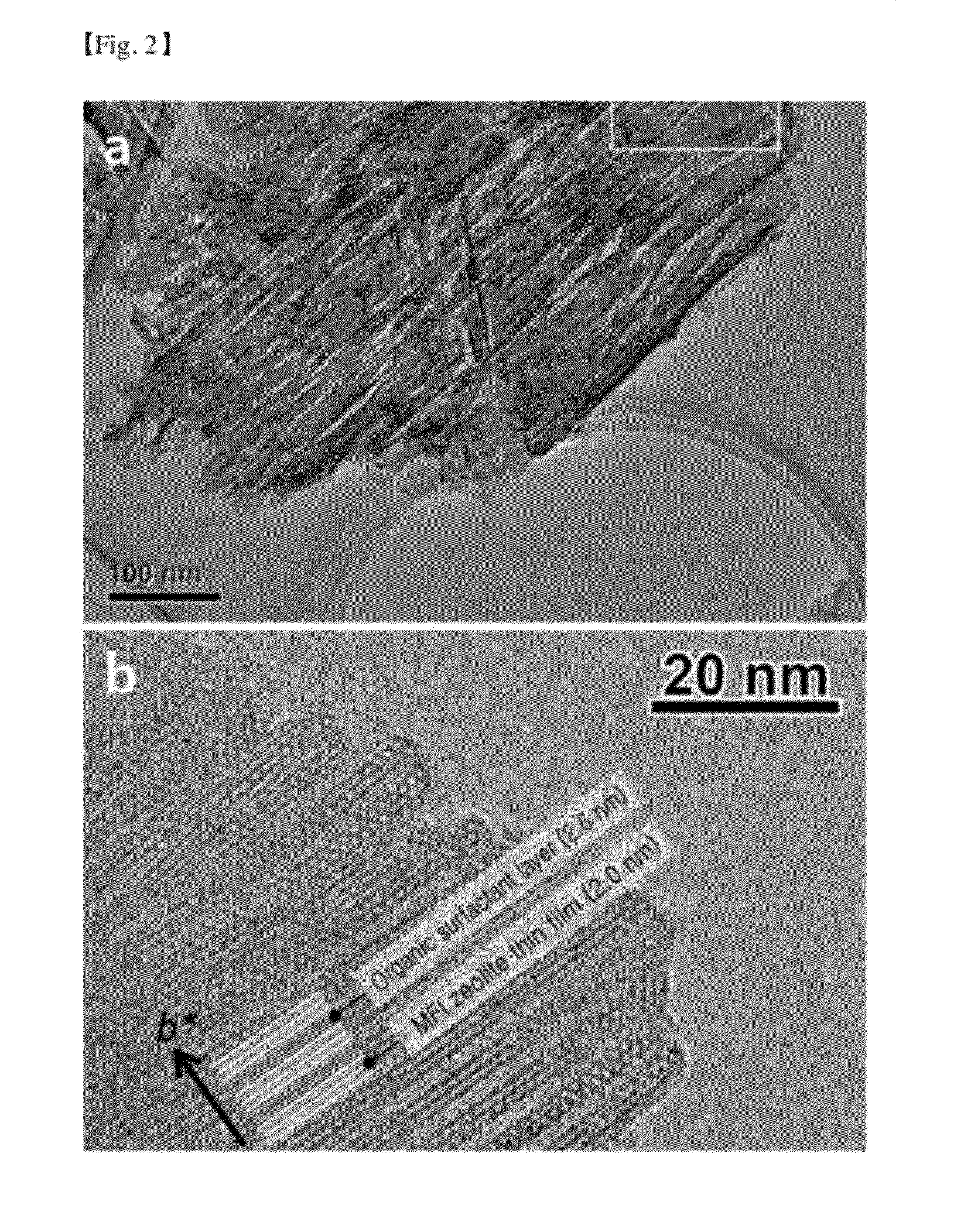Regularly stacked multilamellar and randomly aligned unilamellar zeolite nanosheets, and their analogue materials whose framework thickness were corresponding to one unit cell size or less than 10 unit cell size
a technology of zeolite and multilamellar, which is applied in the direction of physical/chemical process catalysts, bulk chemical production, silicon compounds, etc., can solve the problems of low diffusion rate of zeolite, low yield, and restricted reaction rate in many applications, so as to improve catalytic activity, increase molecular diffusion rate, and increase surface area
- Summary
- Abstract
- Description
- Claims
- Application Information
AI Technical Summary
Benefits of technology
Problems solved by technology
Method used
Image
Examples
example 1
Synthesis of Multilamellar MFI Aluminosilicate with a Single Unit Cell Thickness
[0036]Organic surfactant 22-6-6 (organic surfactant of formula [1] having 22 carbon atoms in C1, 6 carbon atoms in C2, 6 carbon atoms in C3, and 2 ammonium functional groups) were mixed with tetraethylorthosilicate (TEOS), NaOH, Al2(SO4)3, H2SO4 and distilled water to prepare a gel mixture with the following molar composition:
[0037]1 Al2O3: 30 Na2O: 100 SiO2: 4000 H2O: 18 H2SO4: 10 22-6-6 organic surfactant
[0038]After stirring the mixed gel at room temperature for three hours, the final mixed product was placed in a stainless autoclave, and then was left at 150° C. for five days. After cooling the autoclave to room temperature, the product was filtered and washed for several times. The product obtained was dried at 110° C.
[0039]The SEM image of zeolite synthesized as above shows that the zeolite has grown as a crystal having a shape of lamellar structure with a thickness with nano unit (20-50 nm) (FIG. 1...
example 2
Synthesis of Multilamellar Stacking MFI Aluminosilicate with Single Unit Cell Thickness by Removing an Organic Surfactant Via Calcination
[0041]Organic surfactant layer was eliminated by calcining the multilamellar stacking MFI aluminosilicate of a single unit cell thickness synthesized in Example 1 for four hours at 550° C. As can be seen in the TEM image of FIG. 7, after the surfactant was eliminated, the zeolite thin films that were divided by a surfactant layer were condensed to an irregular structure. However, despite the condensation between irregular zeolite thin films, the zeolite framework still had a micro thickness of 2˜5 nm towards b-crystalline axis and comprised irregular mesopores between each zeolite layers. As a result of analyzing the pore structure of the product calcined through the nitrogen adsorption isotherm (FIG. 8), it was shown that the mesopore with the diameter of 2-5 nm and the pore volume of 0.7 mL / g was comprised. This zeolite material represented the B...
example 3
Synthesis of Multilamellar MFI Aluminosilicate with a Single Unit Cell Thickness Supported by a Silica Pillar Between the Layers
[0042]After applying 4 g of TEOS to 1 g of the multilamellar stacking MFI aluminosilicate of a single unit cell thickness prepared in Example 1, it was stirred in a sealed plastic bottle at room temperature for 24 hours. After reaction, the obtained material was filtered without being washed and dried at room temperature for 24 hours, and then after applying 20 g of a distilled water and heating it at 100° C. for 12 hours. After that, it was filtered and washed, it was obtained through filtration and was washed. After being dried at 110° C., an organic surfactant was eliminated by calcining it at 550° C. for four hours. The materials obtained after calcinations had an amorphous silica pillar between the zeolite layers. Thus, the material obtained in Example 3 had a more regular alignment between the zeolite layers than the materials obtained without a parti...
PUM
| Property | Measurement | Unit |
|---|---|---|
| size | aaaaa | aaaaa |
| diameter | aaaaa | aaaaa |
| pore size distribution | aaaaa | aaaaa |
Abstract
Description
Claims
Application Information
 Login to View More
Login to View More - R&D
- Intellectual Property
- Life Sciences
- Materials
- Tech Scout
- Unparalleled Data Quality
- Higher Quality Content
- 60% Fewer Hallucinations
Browse by: Latest US Patents, China's latest patents, Technical Efficacy Thesaurus, Application Domain, Technology Topic, Popular Technical Reports.
© 2025 PatSnap. All rights reserved.Legal|Privacy policy|Modern Slavery Act Transparency Statement|Sitemap|About US| Contact US: help@patsnap.com



